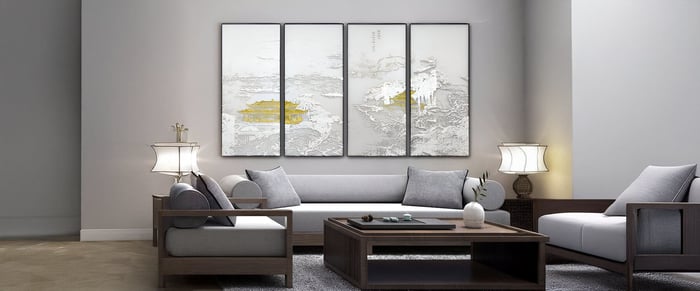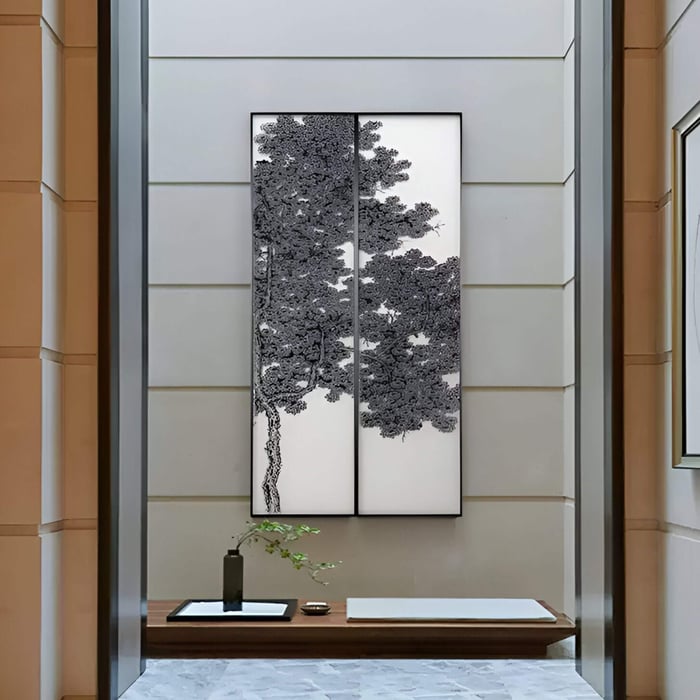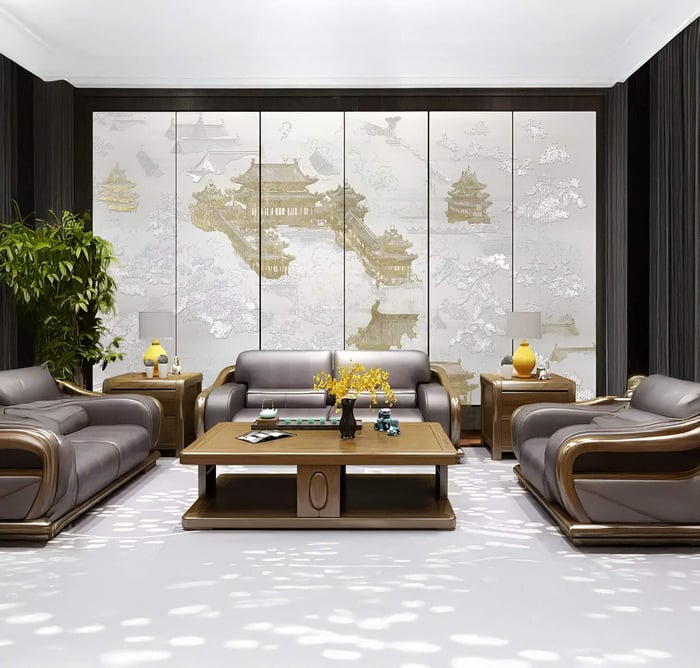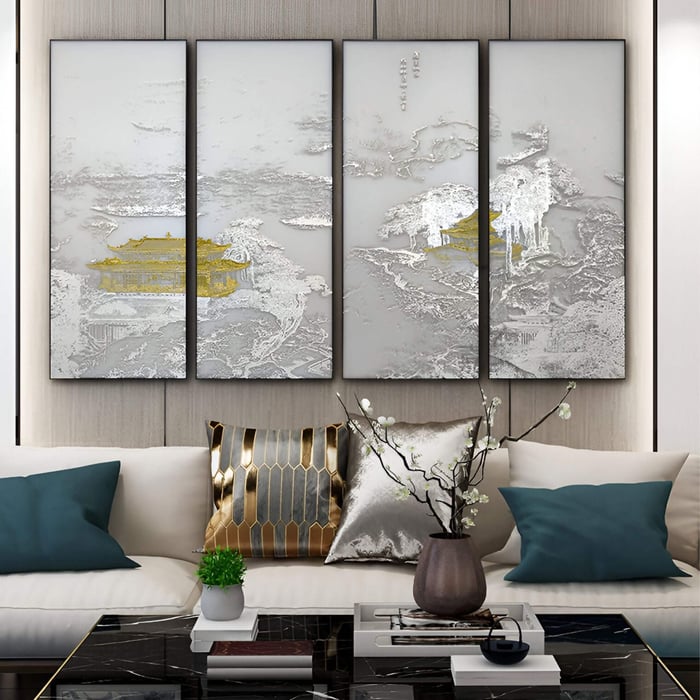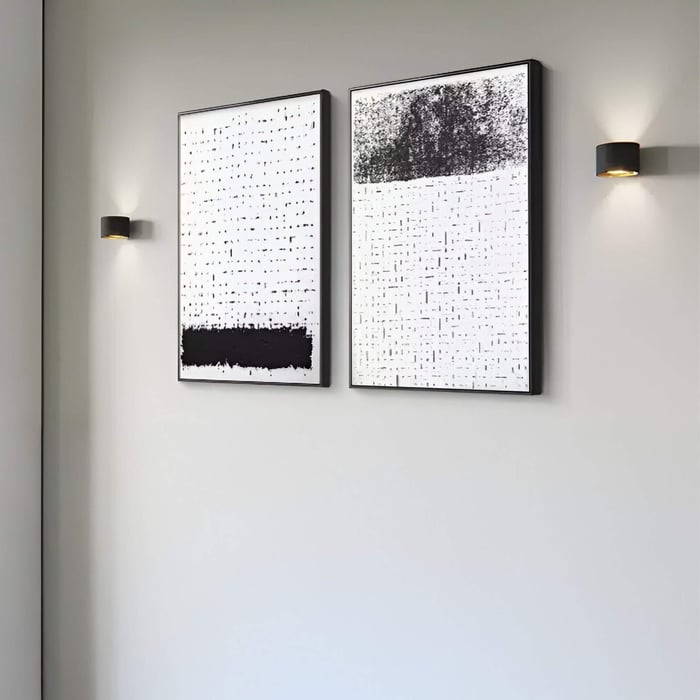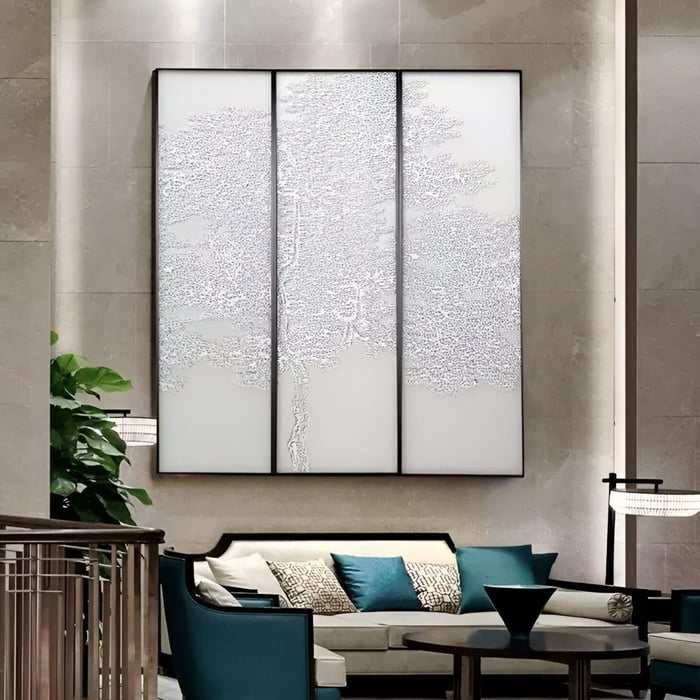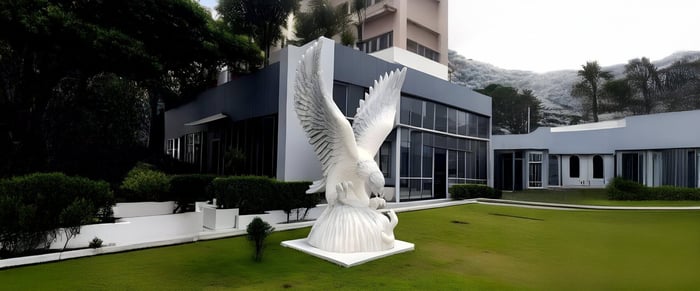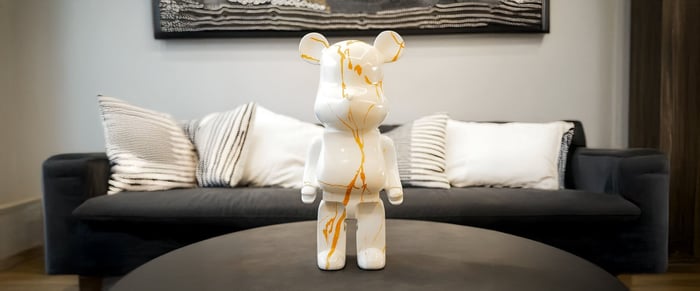In the realm of contemporary interior design, the juxtaposition of minimalism and ornate elements has given rise to innovative aesthetic expressions. Silk art stands at this intersection, offering a unique blend of simplicity and opulence. Its delicate textures and rich hues introduce a sense of tranquillity and sophistication, making it a favoured choice for those seeking to infuse calmness into their living spaces.
As minimalist design continues to dominate, the incorporation of textile-based artworks provides a tactile and visual counterbalance. Whether through minimalist silk paintings or elaborate silk art installations, these pieces serve as focal points that enrich the sensory experience of a room. Thoughtfully curated, they can balance open, clean-lined interiors with warmth and personality.
The Evolution of Silk Art: From Tradition to Modernity
Historical Context
Silk wall decoration boasts a rich heritage, with its origins tracing back to ancient China. Traditional silk paintings, often depicting landscapes and calligraphy, were revered for their intricate detail and cultural significance. These artworks were not merely decorative but also conveyed philosophical and spiritual themes.
Transition to Modern Design
Over time, silk designs transcended its traditional boundaries, embracing contemporary aesthetics. Artists began experimenting with abstract forms, bold colours, and innovative techniques, leading to the emergence of modern silk wall hangings and contemporary silk tapestries. This evolution reflects a fusion of time-honoured craftsmanship with modern artistic sensibilities.
Integration in Minimalist Spaces
In minimalist interiors, silk wall art serves as a bridge between austerity and ornamentation. Its subtle sheen and fluid textures introduce depth without overwhelming the space. A strategically placed silk fabric artwork can transform a stark room into a serene sanctuary, embodying the principles of calming interior design.
Designers love the medium for its ability to add interest without overwhelming a space. Paired with neutral tones and natural materials, silk serves as a subtle anchor, a way to bring depth, light, and quiet sophistication to minimalist spaces.
Texture in Silk Wall Art: Creating Depth and Tactile Interest
Material Qualities
Silk's natural lustre and smoothness make it an ideal medium for creating textured art. Its ability to reflect light adds a dynamic quality, changing appearance with varying illumination. This characteristic enhances the tactile appeal of these art pieces, inviting viewers to engage with them on a sensory level.
Artistic Techniques
Modern silk art isn't confined to two dimensions. Artists incorporate:
Embroidery and Thread-work: Adds raised details and tactile depth.
Painting with Dyes or Ink: Allows colour to flow organically, soaking into the fibres and creating soft gradients.
Appliqué and Layering: Builds sculptural shapes into the fabric for true 3D art effects.
These methods result in decorative silk panels that invite you to both view and feel. The texture of silk draws in natural light, casting shadows and highlights that change throughout the day, subtly shifting the room’s energy.
Sensory Experience
The tactile nature of silk contributes to its calming effect. The interplay of textures and the gentle movement of silk in response to air currents create a soothing ambiance. This sensory engagement aligns with the principles of zen art decor, promoting relaxation and mindfulness.
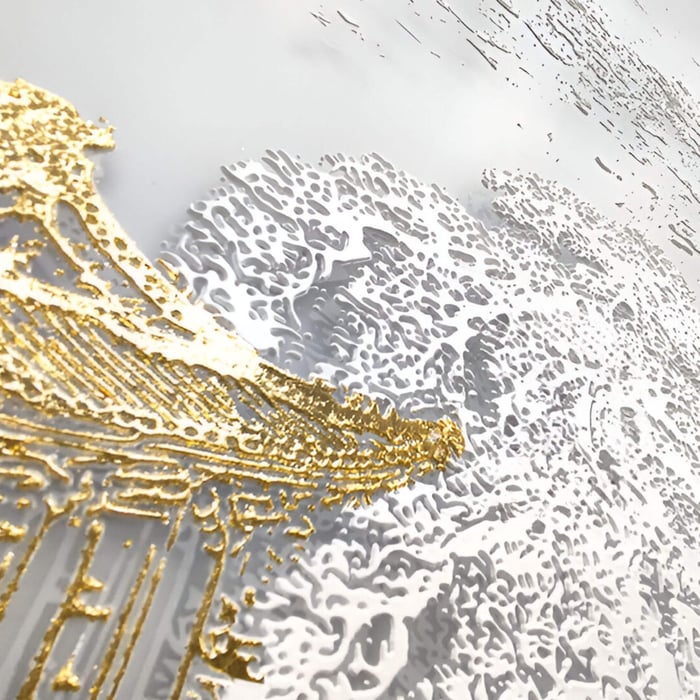
Colour Dynamics: The Subtle Power of Silk-Inspired Palettes
Colour Psychology
Colours play a pivotal role in influencing mood and perception. Silk art often employs a palette that evokes serenity - soft blues, muted greens, and earthy tones are common choices. These hues are known to reduce stress and foster a sense of peace, aligning with the goals of calming interior design.
Harmony with Minimalism
In minimalist settings, the colour schemes of silk art complement the restrained aesthetic. The subtlety of silk's hues prevents visual clutter, while still adding warmth and interest. This balance ensures that the artwork enhances rather than disrupts the minimalist harmony, becoming an integral part of the overall mood and flow.
Balancing Vibrancy and Softness
Some luxury textile art embraces bold tones - deep indigo, burnt orange, forest green, without feeling aggressive. The material softens intensity, making even strong colours feel elegant and lived-in.
Examples of effective colour use:
Modern Silk Wall Hanging: A piece featuring gradient shades of grey and white seamlessly integrates into a monochromatic room, adding depth without overpowering the space.
Contemporary Silk Tapestry: An artwork combining soft pastels introduces a gentle vibrancy to a neutral-toned living area, creating a focal point that exudes calmness.
These examples highlight how the right palette can influence energy without demanding attention, helping to sculpt a serene and layered visual narrative.
Incorporating Silk Wall Art into Interior Design
Placement Strategies
Focal Points: Positioning a large textured art installation above a sofa or bed can serve as a captivating centrepiece.
Gallery Walls: Grouping smaller silk fabric artworks creates a cohesive visual narrative.
Transitional Spaces:Placing silk paintings in hallways or entryways introduces elegance and sets the tone for the rest of the home.
Complementary Decor
Pairing textile art pieces with natural materials like wood or stone enhances its organic appeal. Incorporating soft lighting, especially warm or directional lighting, accentuates the texture and colour nuances, enriching the overall ambiance. Accents like textured rugs, curved furnishings, or tonal throws can create cohesion. Let the silk piece set the tone, then echo its colour or rhythm subtly throughout the space.
Maintenance Tips
Avoid Direct Sunlight: Prolonged exposure can fade colours and damage the fibres.
Regular Dusting: Use a soft brush or cloth to gently remove dust. Avoid abrasive cloths that may catch on threads or stitching.
Professional Cleaning: For stains or deep cleaning, consult textile conservation experts to preserve the artwork's integrity and lifespan.
The Calming Influence of Silk Art in Living Spaces
Creating Tranquillity
Silk art's gentle textures and harmonious colours contribute to a serene environment. Its presence can soften architectural lines and introduce a sense of fluidity, fostering relaxation. Whether in bedrooms, meditation spaces, or quiet lounges, silk offers an understated anchor for wellbeing-focused design.
Mindful Living
Incorporating silk wall art into living spaces encourages mindfulness. The contemplative nature of the artwork invites viewers to pause and reflect, aligning with the principles of zen art decor.
Testimonials
Interior designers and homeowners often note the transformative impact of these artworks. One homeowner shared, "Adding a silk tapestry to our living room not only enhanced the aesthetic but also brought a sense of calm that we hadn't anticipated." Others credit silk paintings with becoming emotional touchpoints in their home, visual reminders to slow down and breathe.
Conclusion: Embracing the Balance of Minimalism and Ornamentation
Silk art exemplifies the harmonious fusion of minimalism and ornate design. Its ability to introduce texture, colour, and calm into interiors makes it a valuable addition to contemporary homes. From historic tapestry-making to modern art installations, this form continues to adapt, inviting quiet contemplation and tactile delight.
Whether you're curating a peaceful home office or redesigning your living room, silk artworks has the power to change the way you see and feel your space. By thoughtfully integrating pieces that align with your aesthetic and emotional needs, you create not just a beautiful environment, but a more intentional one.
Explore our curated collection of silk art at Giant Sculptures and discover how it can transform your space into a haven of tranquillity and timeless style.












































































